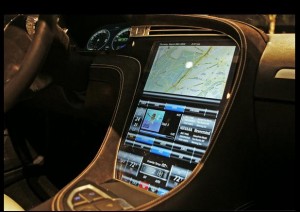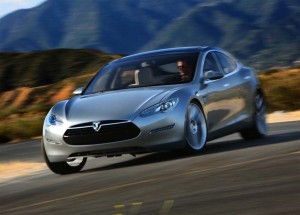 SF Gate is reporting on the progress on Elon Musk‘s Telsa
SF Gate is reporting on the progress on Elon Musk‘s Telsa  Model S electric vehicle – which will be making it’s first deliveries this Friday. Elon Musk received Wall Street Journal Innovator of The Year Award Award in 2011. Tesla Motors is growing its network of retail stores across the United States in preparation for deliveries of Model S, the world’s first premium electric sedan. Tesla recently opened its first U.S. store of the year at The Westchester shopping center in White Plains, New York. Tesla is reinventing the car-buying experience with its unique retail model. Tesla Westchester, the first store of its kind on the East Coast, will feature a hands-on exhibit of the Model S drivetrain, a Design Studio where customers can customize their own Model S, and an interactive touchscreen experience designed to engage and inform customers about Tesla’s advanced technology and the benefits of driving electric. The store will open with four Model S Betas on display, a record number of vehicles at a Tesla store opening.
Model S electric vehicle – which will be making it’s first deliveries this Friday. Elon Musk received Wall Street Journal Innovator of The Year Award Award in 2011. Tesla Motors is growing its network of retail stores across the United States in preparation for deliveries of Model S, the world’s first premium electric sedan. Tesla recently opened its first U.S. store of the year at The Westchester shopping center in White Plains, New York. Tesla is reinventing the car-buying experience with its unique retail model. Tesla Westchester, the first store of its kind on the East Coast, will feature a hands-on exhibit of the Model S drivetrain, a Design Studio where customers can customize their own Model S, and an interactive touchscreen experience designed to engage and inform customers about Tesla’s advanced technology and the benefits of driving electric. The store will open with four Model S Betas on display, a record number of vehicles at a Tesla store opening.
“Our sales strategy is very different from the rest of the automotive industry — we put our stores in high foot-traffic locations so we can tell as many people as possible about Tesla’s incredible cars,” says George Blankenship, Tesla’s vice president of worldwide sales and ownership experience. “Opening our own stores allows us to ensure consumers interested in learning more about Tesla will receive an amazing customer experience from the moment they walk through the door.”
Tesla Westchester will be the 22nd company-owned store worldwide. The company will open four additional stores this summer at 3rd Street Promenade in Santa Monica, California, Fashion Square in Scottsdale, Arizona, Washington Square in Portland, Oregon, and on Lincoln Road in Miami Beach, Florida. These stores will expand Tesla’s “new retail experience” to both new and existing markets.Model S was designed from the ground up as an electric car. Engineered for performance, it offers a premium ride, great handling and accelerates from 0 to 60 miles per hour in as little as 4.4 seconds. With seating for five adults and two children in optional rear-facing seats, plus ample cargo space, Model S blends smart design with cutting-edge technology. The 17″ in-dash touchscreen with wireless capabilities allows for streaming radio, navigation and web browsing. Model S is offered with three battery pack options to suit a variety of drivers’ needs, and can be recharged using any conventional outlet. Tesla has more than 10,000 reservations for Model S worldwide.







